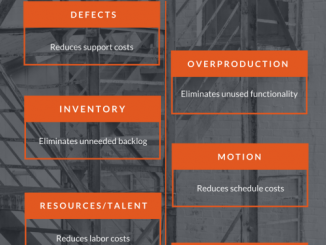Articles on Scrum and Agile Project Management
Even if the Scrum framework is simple and easy to describe, there are still many cases were organizations fail in adopting Scrum. One of the main reasons is that many companies see the transformation towards Agile as a simple change in the process and not the adoption of new values. In this article, Zuzi Šochová explains that you cannot just do Scrum, you have to be Scrum.
Retrospectives are an important tool for Agile software development teams to support continuous improvement. One of the challenge is to maintain their efficiency when this activity is repeated again and again. To achieve better results, Scrum Masters will diversify the type of formats, but this might not solve the issue. In this article, Colleen Johnson proposes an approach that focuses instead on the type of data collected to improve the outcome of your retrospectives.
In an ideal Agile world, the Scrum team is always completing all the selected user stories at the end of the sprint. In the real world however, there might be some product backlog items that don’t have a “done” status, but are only partially finished. Should you split them for the next sprint? In this article, Daniel Zacharias gives you four reasons why it is a bad idea to split unfinished product backlog items.
User stories are one of the main format to record user needs in the Agile world. There is however a debate on the amount of information that should be available to the Scrum team before starting the sprint. In this article, Zuzi Šochová recommends to minimize the size of user stories and to define simple conditions of satisfaction instead of writing acceptance criteria.
If shorter release cycle could be considered as a success for Agile software development teams, they might be considered as an issue if the other parts of the organization are not ready to handle this. In this article, Colleen Johnson shares an experience where the successes achieved implementing the Kanban method at the team level were leveraged to expand them to the enterprise level.
Like the notion of technical debt, the concept of management debt relates to the leadership issues that prevent a successful Agile transformation. This article from Agile transformation expert Sriram Rajagopalan discusses the types of waste that can be eliminated using a Kanban approach and the role of management debt in perpetuating wasteful practices.
The notion of product is important in Scrum. Many qualify it as a product development approach rather than a project management framework. The product owner role is responsible that the production of the Scrum team meets the requirements of the customers and deliver value for the organization. This role is often compared to the role of product manager. In his article “Mapping the Product Manager Role to the Product Owner Role”, Sriramasundararajan Rajagopalan discusses if a product manager is the same as a product owner.








